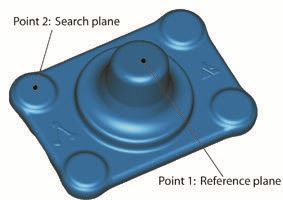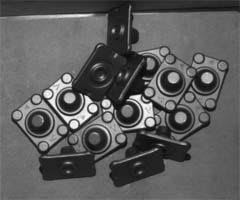The algorithm works by searching through the scene for pairs of points and surface normals that have a given distance and orientation with respect to each other. Whenever such points are detected, a candidate pose is generated for evaluation against the CAD model of the object.
The 3DMaMa algorithm has been implemented in version 8 of Scorpion Vision Software, a commercial machine vision software package made by Tordivel AS.
|
|
|

3D image with localized car parts annotated in different colors.
The figures above show the example of the algorithm applied for Random Bin Picking, where a series of randomly oriented automotive car parts are located with 6 degrees of freedom in less than one second. The CAD model of the car part is annotated on the 3D image in different colors in each position and pose that has been identified. Coordinates and euler angles can be sent to a robot with a suitable tool for gripping the components.

